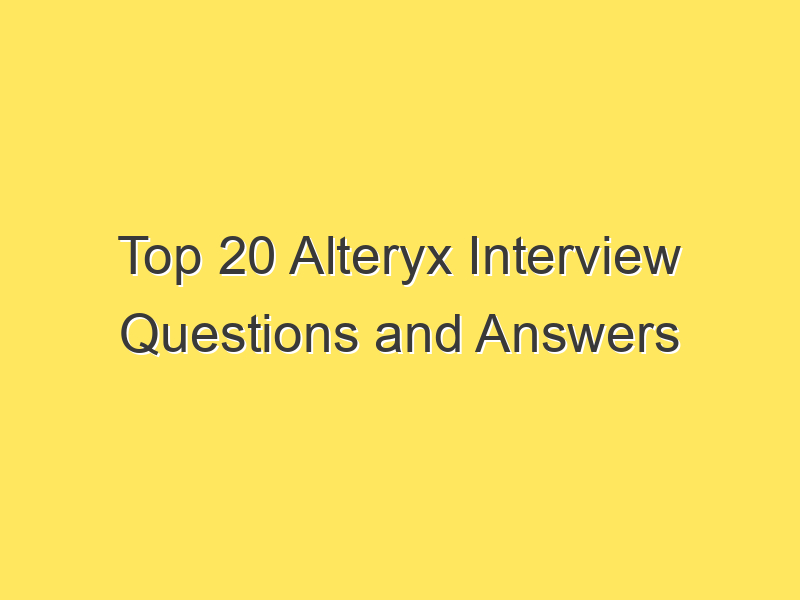Top 100 Docker Interview Questions and Answers 2023 :
Docker has revolutionized the way software applications are developed, deployed, and managed. Docker containers offer a lightweight and efficient way to package applications and their dependencies, making them a popular choice for building and deploying microservices-based applications. If you’re preparing for a Docker interview, it’s essential to have a solid understanding of Docker concepts and best practices. To help you succeed, we’ve compiled a list of the top 100 Docker interview questions and answers.
Post Contents

Docker Basics
- What is Docker?Docker is an open-source platform that automates the deployment of applications inside lightweight, portable containers.
- What is a Docker container?A Docker container is a lightweight, standalone executable package that contains everything needed to run a piece of software, including the code, runtime, libraries, and system tools.
- What is the difference between a Docker image and a Docker container?
- A Docker image is a read-only template that contains the application and its dependencies.
- A Docker container is a running instance of a Docker image.
- How can you pull a Docker image from Docker Hub?You can use the
docker pullcommand followed by the image name and tag, like this:docker pull image_name:tag
- Explain the Dockerfile.A Dockerfile is a text file that contains instructions for building a Docker image. It specifies a base image, adds dependencies, copies application code, and defines runtime configurations.
Example Dockerfile:
DockerfileFROM ubuntu:20.04
RUN apt-get update && apt-get install -y nginx
COPY myapp /var/www/html/
CMD ["nginx", "-g", "daemon off;"]
Container Lifecycle
- How do you create a Docker container from an image?Use the
docker runcommand to create and start a container from an image, like this:arduinodocker run image_name
- Explain the difference between the
docker runanddocker startcommands.docker runcreates and starts a new container from an image.docker startstarts an existing container that is stopped.
- How do you stop a running Docker container?Use the
docker stopcommand followed by the container ID or name, like this:arduinodocker stop container_name
- What is a Docker network?A Docker network is a communication bridge that allows containers to communicate with each other or with the host system.
- How do you remove a Docker container?Use the
docker rmcommand followed by the container ID or name, like this:bashdocker rm container_name
- How can you list all running containers?You can use the
docker pscommand to list all running containers:docker ps
- What is the purpose of the
docker execcommand?Thedocker execcommand is used to run a command inside a running container. For example:bashdocker exec -it container_name bash
Docker Images
- How can you build a Docker image from a Dockerfile?Use the
docker buildcommand followed by the path to the directory containing the Dockerfile:docker build -t image_name:tag .
- What is a Docker image layer?A Docker image is composed of multiple read-only layers. Each layer represents a set of file system changes.
- Why is it important to minimize the number of layers in a Docker image?Minimizing the number of layers reduces image size and improves build and deployment performance.
- Explain Docker image tagging.Tagging allows you to assign a meaningful name and version to a Docker image. You can tag an image using the
-tflag when building:docker build -t image_name:tag .
- How can you push a Docker image to Docker Hub?Use the
docker pushcommand to push an image to Docker Hub:perldocker push image_name:tag
- What is a Docker image registry?A Docker image registry is a centralized repository for storing and distributing Docker images. Docker Hub is a popular public registry.
Docker Volumes
- What is a Docker volume?A Docker volume is a mechanism for persisting data generated by a container. It provides a way to share data between containers and the host system.
- How do you create a Docker volume?You can create a Docker volume using the
docker volume createcommand:luadocker volume create my_volume
- How can you mount a Docker volume to a container?Use the
-vor--volumeflag when running a container to specify a volume to mount:javascriptdocker run -v my_volume:/path/in/container image_name
- Explain the difference between a bind mount and a Docker volume.
- A bind mount maps a directory or file from the host into the container.
- A Docker volume is managed by Docker and is more suitable for sharing data between containers.
- How can you inspect a Docker volume?Use the
docker volume inspectcommand followed by the volume name:docker volume inspect my_volume
- How do you remove a Docker volume?You can remove a Docker volume using the
docker volume rmcommand:bashdocker volume rm my_volume
Docker Compose
- What is Docker Compose?Docker Compose is a tool for defining and running multi-container Docker applications. It uses a YAML file to define the services, networks, and volumes that make up an application.
- How do you start containers defined in a Docker Compose file?Use the
docker-compose upcommand followed by the name of the Compose file:docker-compose up -f docker-compose.yml
- Explain the purpose of a Docker Compose service.A service in Docker Compose defines a container and its configuration, including the image, environment variables, ports, and more.
Example
docker-compose.yml:yamlversion: '3'
services:
web:
image: nginx
ports:
- "80:80"
- How do you scale services defined in a Docker Compose file?You can scale services using the
docker-compose upcommand with the--scaleoption:cssdocker-compose up -f docker-compose.yml --scale service_name=3
- What is the purpose of Docker Compose volumes?Docker Compose volumes allow you to define named volumes or bind mounts for data persistence and sharing among containers.
- How can you remove containers and volumes defined in a Docker Compose file?Use the
docker-compose downcommand to stop and remove containers and associated volumes:docker-compose down -f docker-compose.yml
Networking in Docker
- What is Docker networking?Docker networking enables communication between containers and between containers and the host or external networks.
- How can you create a user-defined Docker network?You can create a user-defined Docker network using the
docker network createcommand:luadocker network create my_network
- Explain the difference between the
bridgeandhostnetwork modes.- The
bridgenetwork mode creates an isolated network for containers on the same host. - The
hostnetwork mode allows a container to share the network namespace with the host, using the host’s network stack.
- The
- How can containers on different Docker networks communicate with each other?You can connect containers from different networks by using the
--networkoption with thedocker runcommand:arduinodocker run --network=my_network container_name
- What is a Docker network alias?A Docker network alias allows a container to have multiple names within a network. You can specify aliases in the
--network-aliasoption when running a container.Example:
cssdocker run --network=my_network --network-alias=my_alias container_name
Docker Security
- What is container isolation, and why is it important?Container isolation refers to the ability of containers to run independently of each other and the host system. It is important to prevent one container from affecting the stability or security of others.
- How can you limit CPU and memory resources for a Docker container?Use the
--cpuand--memoryoptions when running a container to limit CPU and memory resources:cssdocker run --cpu=2 --memory=512m container_name
- What is Docker Content Trust, and why is it used?Docker Content Trust is a security feature that ensures the authenticity and integrity of Docker images. It uses digital signatures to verify the publisher of an image.
- How do you enable Docker Content Trust?You can enable Docker Content Trust globally by setting the
DOCKER_CONTENT_TRUSTenvironment variable to1:arduinoexport DOCKER_CONTENT_TRUST=1
- Explain Docker container seccomp profiles.Seccomp (secure computing mode) is a Linux kernel feature that restricts the system calls a process can make. Docker allows you to define custom seccomp profiles for containers to enhance security.
Docker Swarm and Orchestration
- What is Docker Swarm?Docker Swarm is a native Docker clustering and orchestration solution for managing a group of Docker nodes as a single virtual system.
- How do you initialize a Docker Swarm cluster?Use the
docker swarm initcommand to initialize a Swarm cluster on a manager node:csharpdocker swarm init
- What is a Docker service in Swarm mode?A Docker service defines how a container should run, including the image, replicas, placement constraints, and more.
Example:
cssdocker service create --replicas 3 --name my_service nginx
- Explain the difference between global and replicated services in Docker Swarm.
- A global service runs one task per node in the Swarm.
- A replicated service runs a specified number of tasks, distributing them across available nodes.
- How can you update a Docker service in Swarm mode?You can update a service using the
docker service updatecommand:sqldocker service update --replicas 5 my_service
- What is the purpose of Docker Swarm mode’s routing mesh?The routing mesh in Docker Swarm mode enables automatic load balancing and routing of incoming traffic to services running on the cluster.
- How do you add a node to an existing Docker Swarm cluster?Use the
docker swarm joincommand on a worker node to join it to an existing Swarm cluster:sqldocker swarm join --token TOKEN MANAGER_IP:PORT
- What is Docker Stack?Docker Stack is a tool for deploying multi-service applications on a Swarm cluster. It uses a Compose file to define the application’s services, networks, and volumes.
- How do you deploy a Docker Stack?Use the
docker stack deploycommand to deploy a stack:arduinodocker stack deploy -c docker-compose.yml my_stack
- Explain Docker Swarm’s high availability features.Docker Swarm provides high availability by automatically distributing services across nodes and maintaining data redundancy.
Docker Logging and Monitoring
- How can you view the logs of a running Docker container?You can view container logs using the
docker logscommand followed by the container ID or name:docker logs container_name
- What is the purpose of the
--log-driveroption in Docker?The--log-driveroption allows you to specify the log driver used by a container. Common log drivers includejson-file,syslog, andfluentd. - How do you configure Docker to use a different log driver globally?You can configure Docker to use a different default log driver by editing the Docker daemon configuration file (usually
/etc/docker/daemon.json) and adding thelog-driverkey.Example:
json{
"log-driver": "syslog"
}
- What is Docker Swarm’s built-in logging and monitoring solution?Docker Swarm provides built-in support for logging and monitoring through services like Prometheus for metrics and Grafana for visualization.
- Explain Docker container health checks.Docker container health checks allow you to define custom commands or conditions to determine the health of a container. You can specify a health check in a Dockerfile or using the
--health-cmdoption when running a container.
Docker Security Best Practices
- What are some best practices for securing Docker containers?
- Keep base images and dependencies up to date.
- Use minimal base images.
- Remove unnecessary software and packages.
- Implement least privilege access.
- Use Docker Content Trust.
- Isolate containers with Docker networks.
- Monitor and audit container activity.
Docker Registry and Image Management
- What is a private Docker registry, and why might you use one?A private Docker registry is a repository for storing Docker images privately. Organizations use private registries to store proprietary or sensitive images.
- How can you set up a private Docker registry?You can set up a private Docker registry using Docker’s official registry image and configuring it to run as a container.
- What is the purpose of Docker image caching?Docker image caching improves build performance by reusing intermediate image layers during the build process. It avoids unnecessary downloads and builds.
- How can you force Docker to rebuild an image without using the cache?Use the
--no-cacheoption with thedocker buildcommand to rebuild an image without using the cache:cssdocker build --no-cache -t image_name:tag .
- What is Docker’s “squash” feature?The “squash” feature allows you to reduce the number of layers in an image by merging them into a single layer. This can help reduce image size.
- What is the purpose of Docker image scanning tools?Docker image scanning tools, such as Docker Security Scanning, analyze images for known vulnerabilities and provide recommendations for remediation.
Docker and Continuous Integration/Continuous Deployment (CI/CD)
- How can you integrate Docker into a CI/CD pipeline?Docker is commonly used in CI/CD pipelines to package applications into containers, test them, and then deploy them to production environments.
- What is Docker’s role in container orchestration platforms like Kubernetes?Docker is used as a container runtime in platforms like Kubernetes to create and manage containers. Kubernetes abstracts away the underlying infrastructure, making it easier to manage and scale containers.
Docker Troubleshooting
- How can you troubleshoot a Docker container that fails to start?
- Check the container logs with
docker logs. - Inspect the container with
docker inspect. - Verify that the image and dependencies are correct.
- Check the container logs with
- What is the purpose of the
docker eventscommand?Thedocker eventscommand provides a stream of real-time events from the Docker daemon, which can be helpful for diagnosing issues. - How can you access a shell inside a running Docker container for debugging?You can use the
docker execcommand to access a shell inside a running container:bashdocker exec -it container_name /bin/bash
Docker Ecosystem
- What are some alternatives to Docker for containerization?
- Kubernetes
- Podman
- containerd
- rkt
- What is Docker Compose used for?Docker Compose is used for defining and running multi-container applications. It simplifies the management of interconnected containers.
- What is Docker Swarm compared to Kubernetes?Docker Swarm is a simpler, built-in orchestration tool for Docker, while Kubernetes is a more comprehensive and complex container orchestration platform.
- What is Docker Desktop?Docker Desktop is an application for Windows and macOS that provides an easy-to-use interface for working with Docker containers on a local development machine.
- How does Docker Machine simplify the management of Docker hosts?Docker Machine is a tool that simplifies the provisioning and management of Docker hosts on various cloud platforms and virtualization platforms.
- What is Docker Hub, and why is it important?Docker Hub is a cloud-based registry service where you can find, share, and store Docker images. It is a central repository for Docker images and an essential resource for the Docker community.
Docker Interview Tips
- What advice do you have for preparing for a Docker interview?
- Review Docker concepts thoroughly.
- Practice building and running containers.
- Understand Dockerfile best practices.
- Familiarize yourself with Docker Compose and Docker Swarm.
- Learn about security best practices.
- What are some common mistakes to avoid during a Docker interview?
- Not understanding the difference between an image and a container.
- Failing to explain how to persist data with Docker volumes.
- Lack of knowledge about Docker networking and security.
- What questions should you ask the interviewer during a Docker interview?
- What container orchestration tools does your organization use?
- How are security concerns addressed in your Docker deployments?
- Are there any specific Docker-related challenges or projects the team is currently working on?
Remember that Docker interviews can cover a wide range of topics, so be prepared for both basic and advanced questions.
Conclusion
Docker has become a fundamental technology in modern software development and deployment. A solid understanding of Docker concepts, best practices, and its ecosystem is crucial for anyone working with containers. Preparing for a Docker interview with these top 100 questions and answers should help you showcase your knowledge and skills in this essential technology.
Good luck with your Docker interview!







